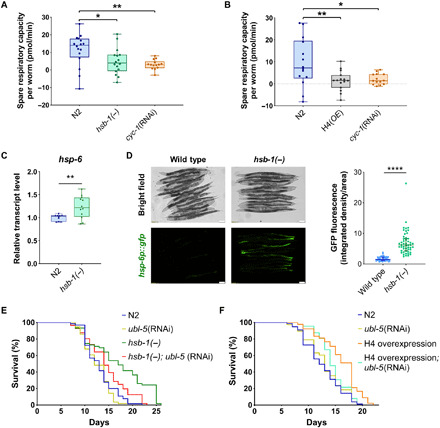Fig. 4. Increased level of histone H4 reduces mitochondrial respiratory capacity in worms, while UPRmt is required for H4-associated longevity.

(A and B) Spare respiratory capacity per worm in wild-type (N2), hsb-1(−), H4 overexpression strain, and Cyc-1(RNAi) worms; corrected for non-mitochondrial oxygen consumption. Central line, box limits, and whiskers indicate median, interquartile range, and data range, respectively, for n ≥ 14. *P < 0.05, **P < 0.01 in Tukey’s multiple comparisons test. (C) Relative transcript levels of hsp-6 in N2 and hsb-1(−) worms. Central line, box limits, and whiskers indicate median, interquartile range, and data range, respectively, for n ≥ 10. **P < 0.01 and ****P < 0.0001 in two-tailed t test. (D) hsp-6p::gfp expression in wild-type and hsb-1(−) worms (left). Quantification of hsp-6p::gfp expression (right). Central line and error bars indicate median, and interquartile range, respectively, for n = 50 per genotype. (E and F) Life-span analysis of N2, hsb-1(−), and H4 overexpression strain subjected to control or ubl-5 RNAi. Statistical data and additional life-span replicates are included in table S1.
